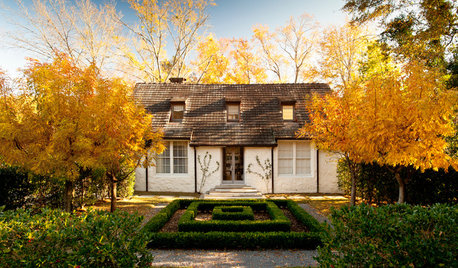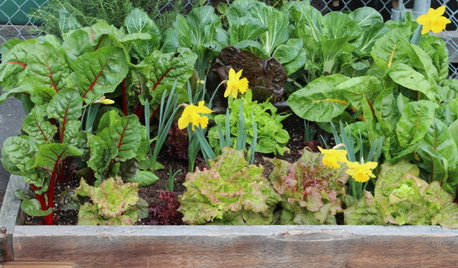Sugar Snap Peas
daimonic
17 years ago
Related Stories

COOL-SEASON CROPSCool-Season Vegetables: How to Grow Peas
Their sweetness isn't just for spring. Peas thrive in cool weather too, adding a garden-fresh note to soups, salads and more through fall
Full Story
MORE ROOMSNap in a Snap, No Bedroom Required
These tips for colors, linens and more can help you turn any room into a snuggly spot for daytime drifting
Full Story
COLOR8 Pink and Purple Rooms Sans Sugar Shock
Little-girl dreams find grown-up expression in rooms that work pink and purple into chic and sophisticated palettes
Full Story
KITCHEN DESIGNHouzz Call: What’s Cooking in Your Kitchen?
Most of us turn to recipes, videos and culinary shows when we cook. Where do you set your cookbook, tablet or TV screen?
Full Story
TREESHouzz Call: Show Us Your Favorite Fall Tree
A towering golden oak? Flaming sugar maple? Please share a photo of peak autumn color where you live!
Full Story
GARDENING GUIDES11 Favorite Edibles for Your Cool-Season Garden
Plant crunchy carrots, crisp radishes, tender peas and other vegetables for fall and spring harvests
Full Story
GARDENING GUIDES10 Easy Edibles for First-Time Gardeners
Focus on these beginner-friendly vegetables, herbs, beans and salad greens to start a home farm with little fuss
Full Story
GARDENING GUIDESWhat Are Your Spring Gardening Plans?
Tearing out the lawn? Planting edibles? Starting from scratch? Tell us what you plan to change in your garden this year
Full Story
FARM YOUR YARDHouzz Call: Home Farmers, Show Us Your Edible Gardens
We want to see where your tomatoes, summer squashes and beautiful berries are growing this summer
Full Story
FARM YOUR YARDGrow a Kitchen Garden in 16 Square Feet
Got a sunny 4-by-4 space? You can make meals more interesting with your own vegetables and herbs
Full Story



Skybird - z5, Denver, Colorado
digit
Related Discussions
Sugar Ann Sugar Snap Peas
Q
Snow peas & sugar snap peas
Q
sugar snap peas seeds 50% snow peas
Q
Saved some sugar snap peas!
Q
rwaldheim
cnetter
Skybird - z5, Denver, Colorado
daimonicOriginal Author
daimonicOriginal Author
digit
Skybird - z5, Denver, Colorado
digit
cnetter
david52 Zone 6
cnetter
Skybird - z5, Denver, Colorado
mundira